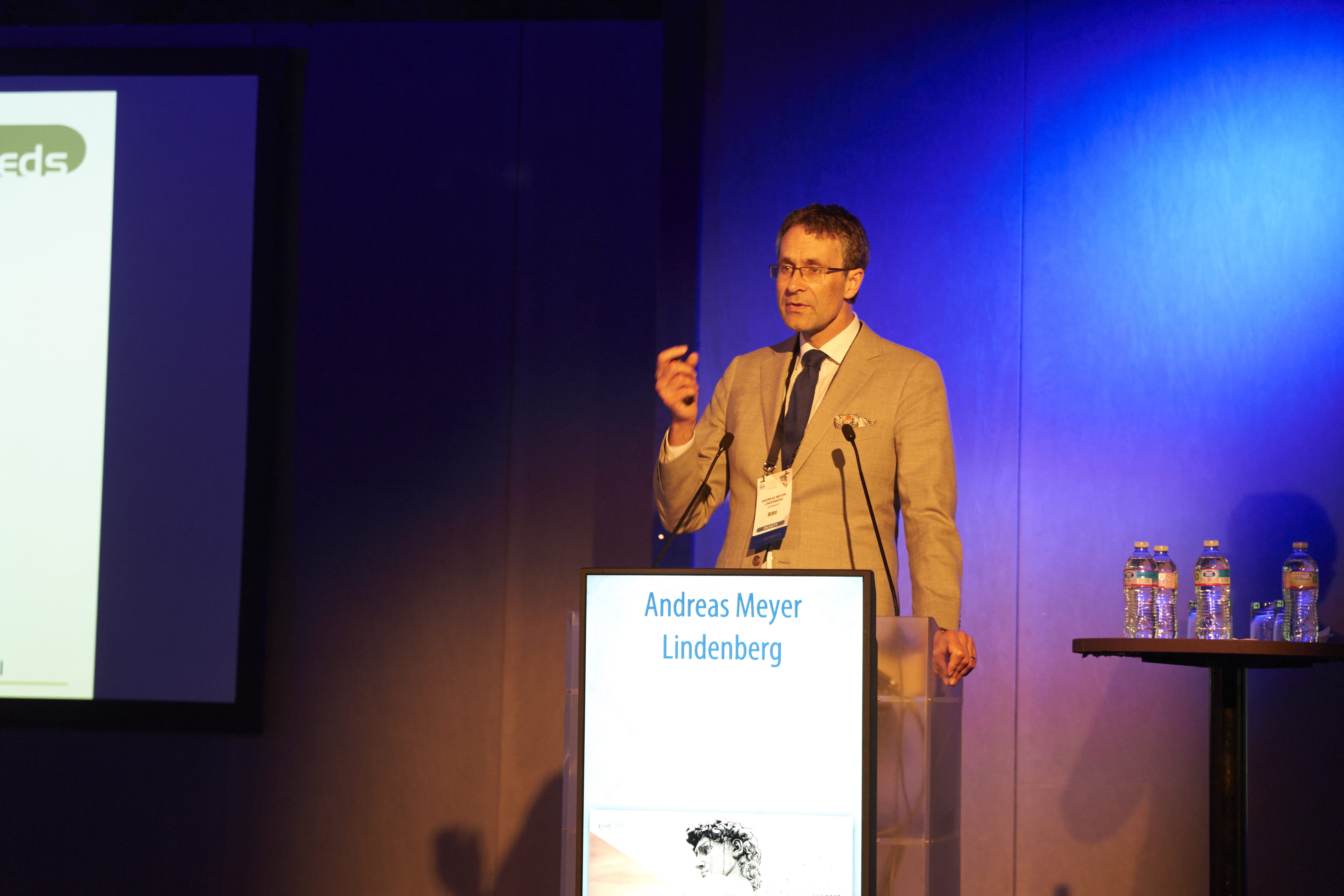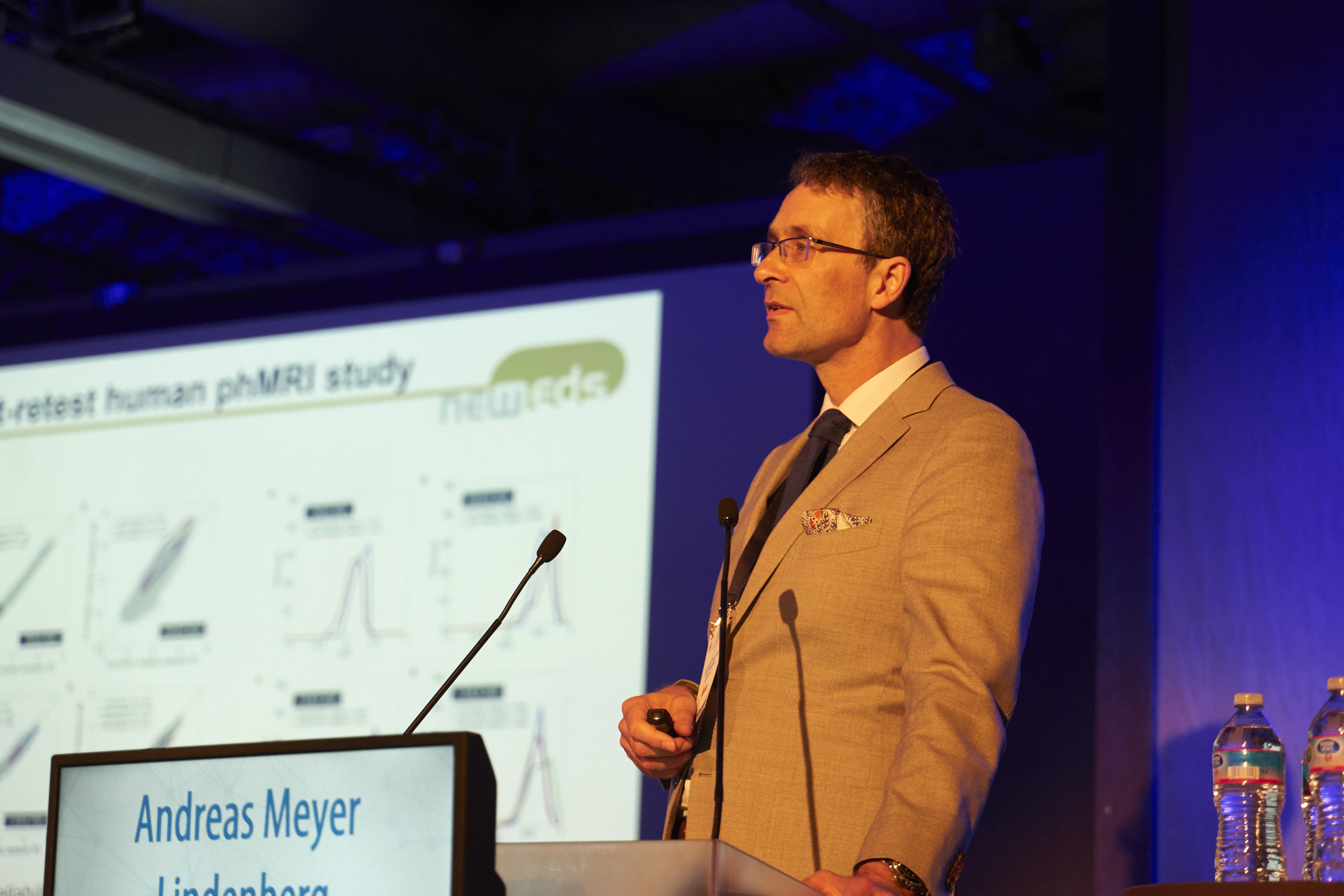



I ricercatori stanno rispondendo chiamata della Commissione Europea nel 2013, di combinare i dati radiologici e di imaging con conoscenze complementari con la successiva validazione ed applicazione nei disturbi mentali.
Al simposio EPA 2017 viene presentata la ricerca finanziata dall'UE nella schizofrenia.
In 2013, the European Commission invited researchers to: " develop new or optimise existing imaging technologies, and validate their application to mental disorders by integrating imaging data with complementary knowledge resulting from e.g. genomics, biomarkers, bioinformatics and clinical data" (HEALTH.2013.2.2.1-2). The goal was to "allow the diagnosis of mental disorders at the pre-symptomatic stage or early during development, more accurate patient stratification and better measurement of disease progression".
Researchers are answering this call.
Key findings from PRONIA were presented by Prof Nikolaos Koutsouleris, Ludwig-Maximilian-University, Germany.
The precedent of MRI-based psychosis prediction was set by Koutsouleris and Borgwardt (2014): in a study of 73 high risk individuals they showed that neuroanatomical prediction models may predict transition from the clinically high risk state to the first episode of psychosis. The aim of PRONIA is to develop a computerised tool to predict the onset and course of early psychotic illness. One of the specific goals of PRONIA is response prediction - to extract signatures that can be rolled out to clinical care.
Response prediction - to extract signatures that can be rolled out to clinical care.
The PRONIA data domains include clinical, neurocognitive and genetic data, as well as imaging data (sMRI, rs-fMRI and DTI). The database includes 420 individuals in each of four groups: recent onset psychosis, at risk mental states, recent onset depression and healthy controls.
Prof Koutsouleris concluded that extracting MRI-based predictive models for social functioning using machine learning methods seems to be feasible. He proposed a first-line strategy to psychiatric risk stratification by using clinical read-outs to add predictive value to MRI-based 'biomarkers‘. The next step is the external validation of these predictive models.
Prof Alberto Del Guerra, University of Pisa, Italy, introduced us to TRIMAGE, a dedicated trimodality (PET/MR/EEG) imaging tool for schizophrenia, which began in 2013. TRIMAGE aims to give clinicians an effective tool for diagnosis and treatment choice. This will be achieved by optimizing and validating an integrated diagnostic solution that includes simultaneous PET, MR and EEG imaging and specific biomarkers.
Integrated diagnostic solution that includes simultaneous PET, MR and EEG imaging and specific biomarkers.
In the first phase, which will produce a 'Biomarkers and Multimodal Paradigm', 40 patients with schizophrenia and 40 healthy controls will be included. The second and final phase, for assessment of the PET/MR/EEG prototype will include 15 patients with schizophrenia, 15 prodromal individuals and 15 matched healthy controls.
He explained that the instrument will consist of a cryogen-free compact superconducting magnet, a PET insert and a fully integrated EEG. The PET insert is based on a silicon photomultiplier with better performance than any available clinical scanner - 2 mm full width at half-maximum (FWHM) spatial resolution and 7% sensitivity.
This ambitious project has to overcome a number of practical challenges. These include the MRI compatibility of the PET scanner, interference of PET and MRI, volume reduction of the PET detector, as well as heat dissipation. Prof Del Guerra and colleagues are working hard to overcome these challenges and aim to have the PET/MR/EEG prototype completed, tested and installed by June 2018, with clinical validation carried out by December 2018.
Prof Andreas Meyer-Lindenberg, Central Institute of Mental Health, Germany, reminded us of the story of the "Pink Spot". In the 1960's, it was noticed that patients with schizophrenia had pink urine, compared to healthy individuals, and it was reported that a biologically active compound had been found. In the end, it was found that this colour difference in the urine was an artifact - the patients drank more tea than the nursing staff. He noted that the theory of markers does not always gracefully translate into the reality of clinical practice. We must ensure that the markers we look for now are validated clinically - and found to be accurate.
The theory of markers does not always gracefully translate into the reality of clinical practice.
Prof Meyer-Lindenberg presented the findings of the IMAGEMEND consortium - IMAging Genetics for MENtal Disorders. This project, which started in 2013, is an integrative multimodal database with a focus on bipolar disorder and ADHD. IMAGEMEND is made up of five scientific work packages - central infrastructure, diagnostic markers, predictive markers, early diagnosis and clinical translation. There is also an ethics work package, looking into attitudes towards biomarker testing.
The ultimate goal of IMAGEMEND is the advancement of clinical care for mental disorders. The translation work package will use the identified diagnostic and predictive signatures to develop clinical tests to facilitate diagnosis and treatment selection.
Prof Rene Kahn, University Medical Center, the Netherlands, presented results from OPTiMiSE - the Optimization of Treatment and Management of Schizophrenia in Europe. This study seeks to answer the fundamental question of how well do patients respond on their first episode? And does switching make sense? He concluded that 56% of first episode patients reached remission in 4 weeks, 63% in 10 weeks. It was found that for non-remitters switching after 4 weeks of treatment did not add value.
An exciting future with a focus on personalized medicine.
One of the chairs of the symposium, Dr Lara Passante (DG RTD) of the European Commission, closed the session by pointing towards an exciting future with a focus on personalized medicine.
Our correspondent’s highlights from the symposium are meant as a fair representation of the scientific content presented. The views and opinions expressed on this page do not necessarily reflect those of Lundbeck.